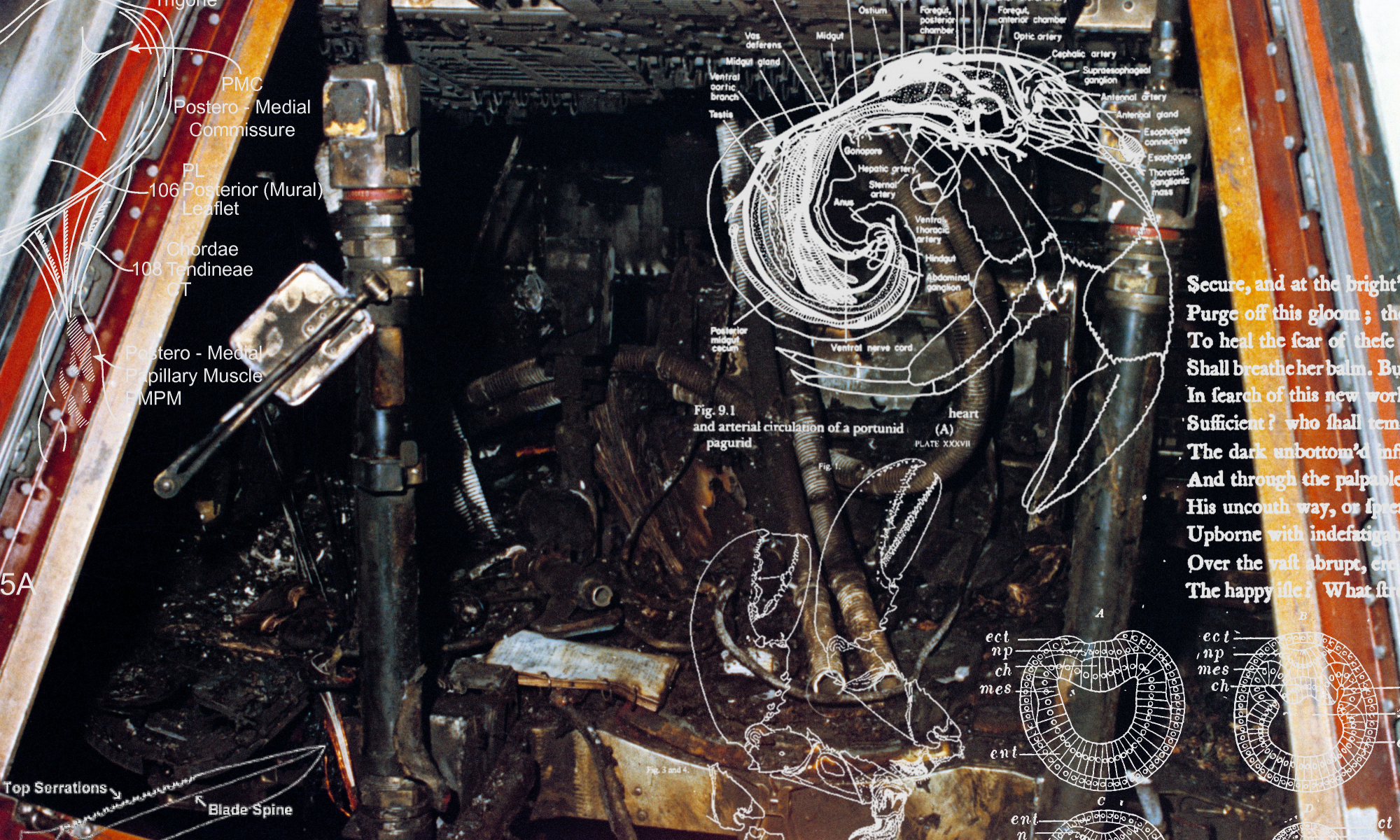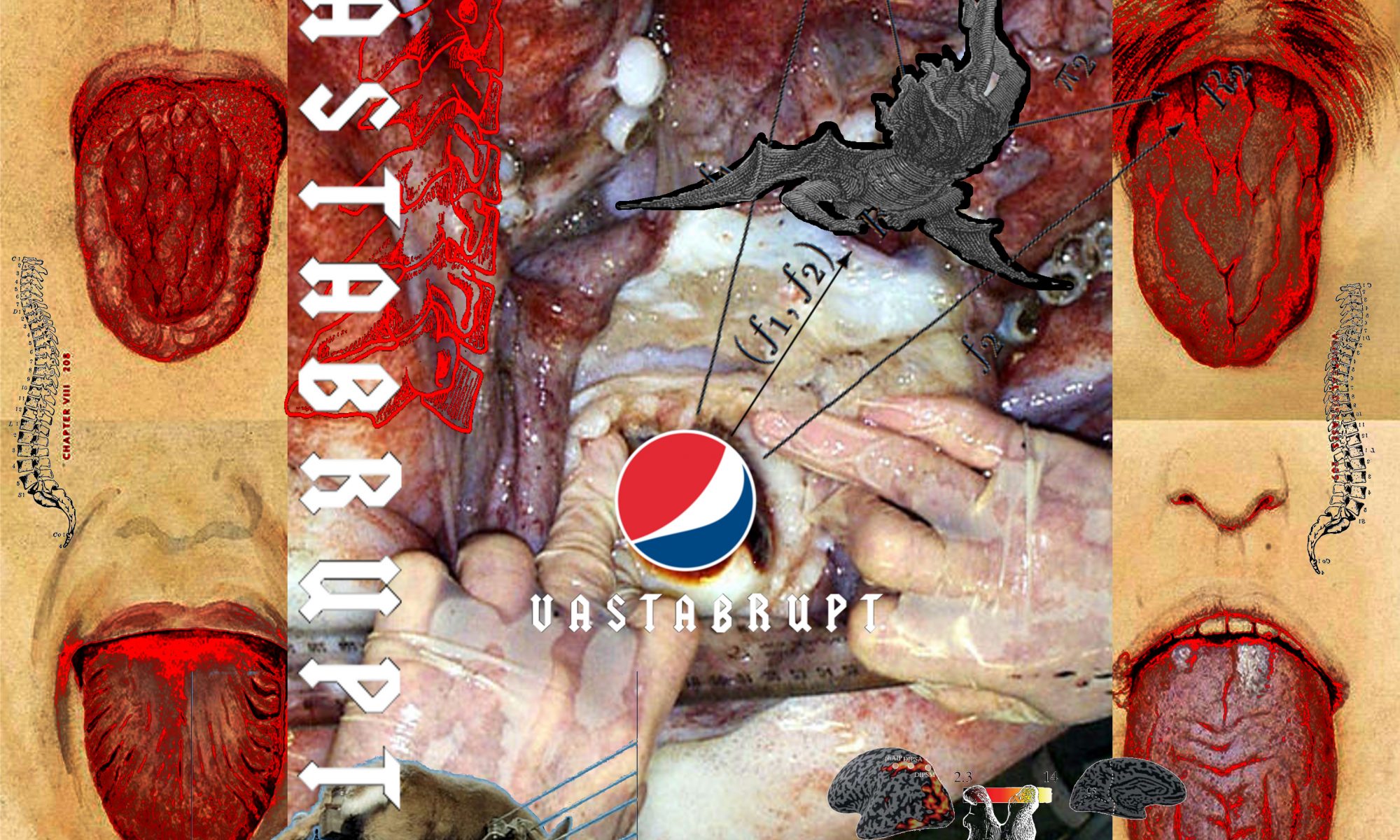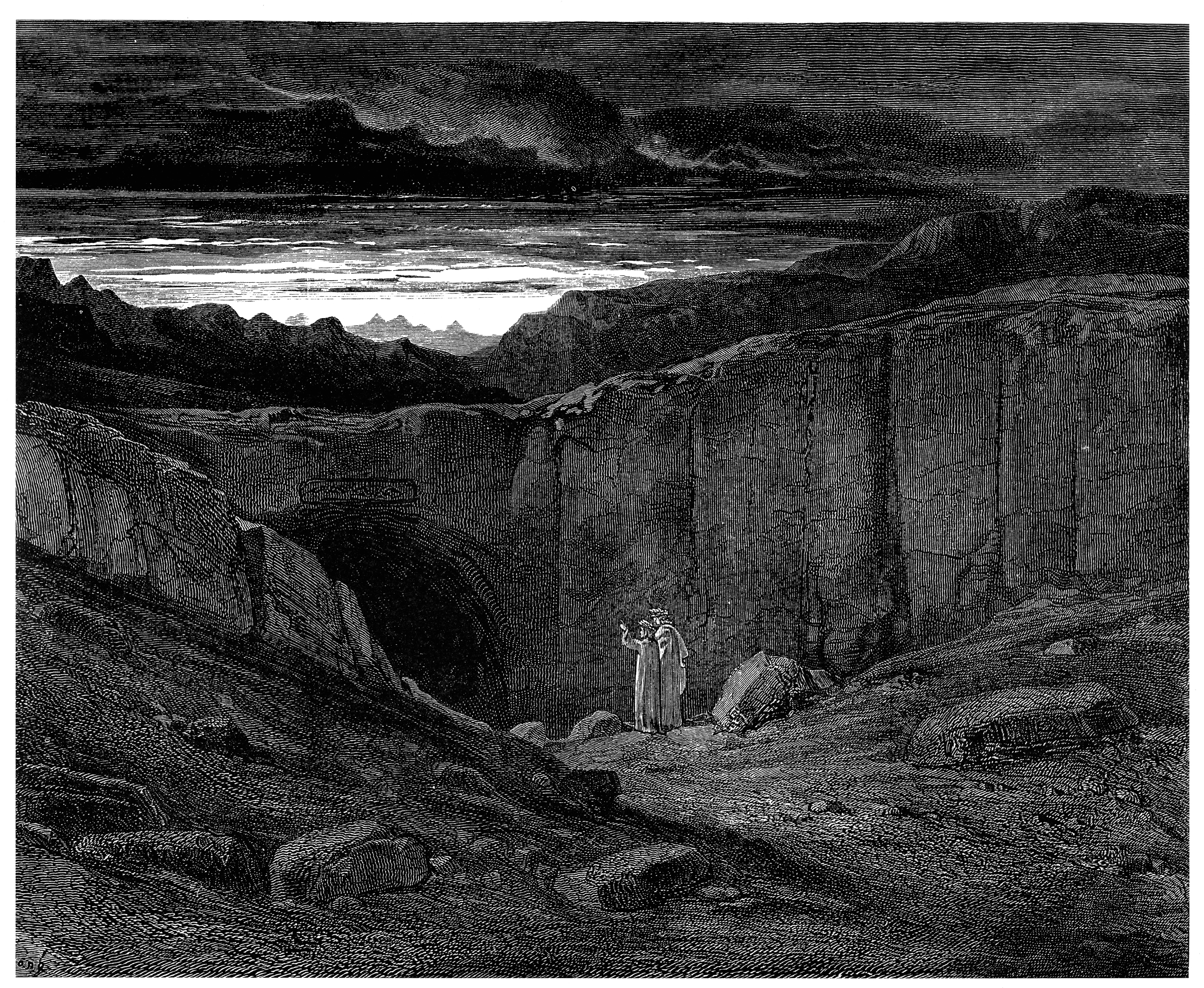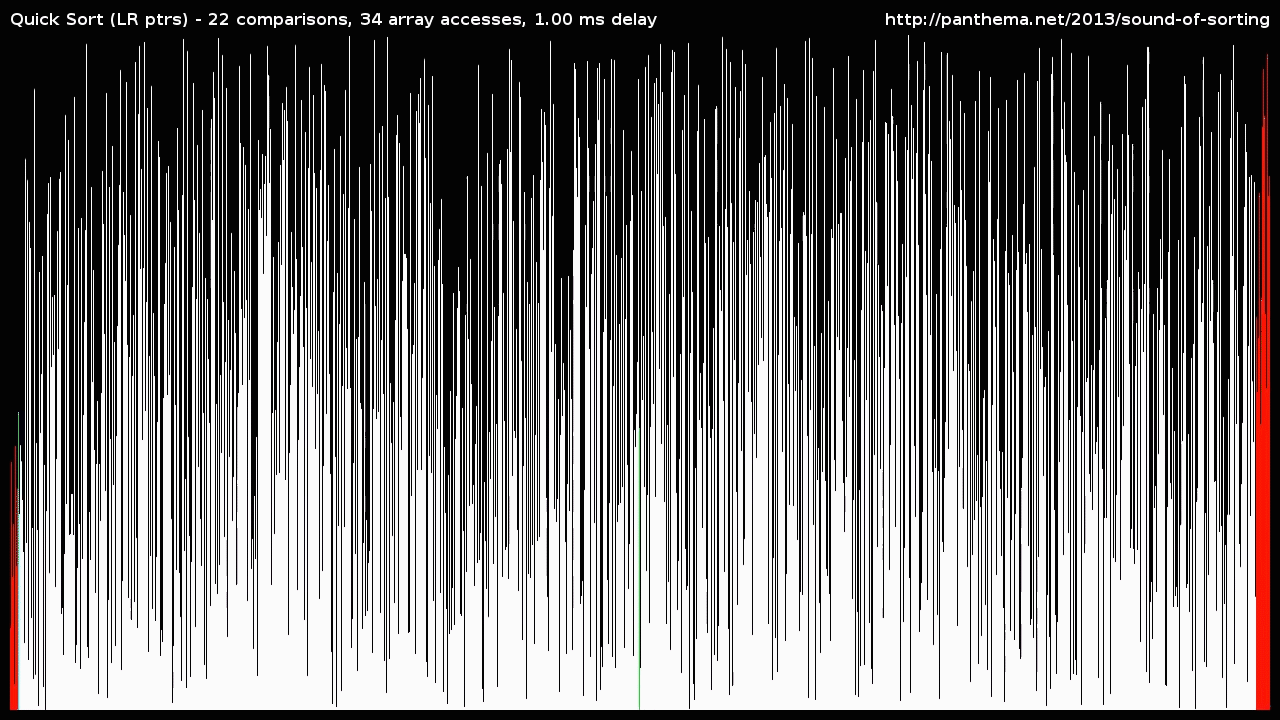2004 MN4
I shall disappear from heaven when I shall have consumed myself, and my doom will have been glorious enough! Know that various fires burn in the temple of God, and do all give Him glory: ye are the light of golden candelabra; I am the flame of sacrifice.[note]Eliphas Levi, The Ritual of Transcendental Magic, Rider & Company, London, 1896, 3.[/note]
A countdown clock still runs on one of the countless forgotten pages in the wastelands of the early 2000s web. The website, www.99942-apophis.com, hosts a timer that marks the time left before Earth’s annihilation by a near-Earth object, asteroid 2004 MN4, later renamed (99942) Apophis, after the Greek name for the Egyptian abyssal snake-god, Apep, the Destroyer. Below a picture representing the catastrophic impact of a gigantic space rock with the Earth, an eerie epitaph is written in red characters, like the testimony of a vaporwave Ozymandias in the dust of his abandoned cyber-kingdom:
This page is in some way still under construction.
I have some time left before 2036.
Some trouble could this timeline be. I am 80 years in 2036.
So the question is; if Apophis or a heart attack will strike me first.
Yes I know my English could be better.[note]99942 Apophis 2004 MN4, http://www.99942-apophis.com/[/note]
2004 MN4 was first discovered in the summer of 2004 by a group of astronomers at the Kitt Peak National Observatory in Arizona. Several months after the discovery, NASA’s Sentry and ESA’s NEODyS automated monitoring systems predicted a possible impact of the asteroid with the Earth on April 13, 2029. On December 23, 2004, the computed probability of the 2029 collision increased dramatically, being first estimated at 1 in 300 and, later that day, being raised to 1 in 62. In the days that followed, the probability kept increasing until it reached 2.7%, the highest value ever recorded, with an unprecedented Torino hazard scale rating of 4. As the astronomers had widely anticipated, after further observations and calculations, the impact probability plummeted and the possibility of the 2029 event was excluded; nonetheless, a second coming of Apophis — exactly seven years after the first one, on April 13, 2036 — was still raising concerns, due to the possibility, although unlikely, that the asteroid’s trajectory could be deviated by its passage through a gravitational keyhole, determining a new risk of collision. By 2013, even this small possibility of impact had been ruled out. Friday, the 13th of April, 2029 will still be a night to remember, as a 300 metre wide asteroid crosses the night sky closer than ever recorded, visible even to the naked eye.

There is a strange affinity between the internet and doomsday. Civilisation’s morbid fascination with its own annihilation has often been relegated to the deepest and most anonymous corners of the web, where, next to scam advertisements menacing horrendous bodily deformities, dark omens of death and destruction steal more clicks than the most depraved pornography. Somehow, secretly, we want to know — in the darkness of our incognito windows — how many seconds, minutes, hours, days, months and years separate us from our doom; if we are sick of an incurable and disgusting disease; when will the Earth be engorged by the fiery abyss of our dying sun. A mirror to our most terrifying nightmares is always one google search away, or even closer, haunting social media with our antisocial urges, as if the Algorithm already knew — and it does — what scares us and excites us the most. Are we afraid? Are we looking for salvation? Or are we just waiting, aroused by the panic ecstasy of disintegration? When it comes to the impact with Apophis, or any other real or imagined threat of apocalypse, the many rational and scientific arguments that solicit the public to remain calm, debunking the ‘fake news’ that spreads unjustified alarm, can never eliminate our fear and our desire for destruction completely. On the contrary, science itself seems to fuel the same conspiracy theories that it tries to suppress, being distorted and transformed from cautious information into prophecy. (99942) Apophis is not merely a celestial body, or an astronomical object, because its influence expands far further than its gravitational field, becoming entangled with our cosmological destiny and speaking to the depths of our being; it is the flaming messenger of a catastrophic revelation. Apophis is, without doubt, the offspring of the limited gaze of scientific inquiry, since the veil of apocalyptic horror that surrounds it is rooted in the cold mechanical equations that dominate its orbit and in the ghost of its spectral signal disturbing our sensors from the depth of space. Nonetheless, no matter how carefully science insists in tracing the limits of its own understanding, barricading itself behind walls of axioms and boundary conditions, it inevitably becomes an oracle, a spiritual medium, opening a laceration onto a radical Outside and summoning an invasion of voices of long lost demons into our world, not unlike a cursed Cassandra who refuses to surrender to her own prophetic utterances. In this sense, conspiracy theorists and cybernetic oracles of the coming apocalypse draw from scientific knowledge not as a source of reliable predictions of reality, but rather “as a poetics of the sacred”, and transform astronomy into an astrology of Armageddon.[note]Nick Land, The Thirst for Annihilation, Routledge, London, 1992, 37.[/note]
One of the first and most illustrious examples of the prophetic power of science is reported by Galileo Galilei in his Sidereus Nuncius:
I feel sure that the surface of the Moon is not perfectly smooth, free from inequalities and exactly spherical, as a large school of philosophers considers with regard to the Moon and the other heavenly bodies, but that, on the contrary, it is full of inequalities, uneven, full of hollows and protuberances, just like the surface of the Earth itself, which is varied everywhere by lofty mountains and deep valleys.[note]Galileo Galilei, Sidereus Nuncius, Byzantinum Press, Oklahoma City, 2004, 7.[/note]
At the time of his writing, the dominant Aristotelian doctrine preached that the cosmos, and all the elements composing it, was perfectly spherical, and that no imperfection was allowed to exist outside of the Earth. Gazing in his telescope, Galileo was struck by a blasphemous revelation: that the moon, and by extension, the entire universe, was irremediably dirty and subjected to the same processes of degradation and dissolution that we experience in our world. The apparently innocuous words of his statement, supported by the reasonable argument of scientific observation, hide an actual, gruesome deicide; if the universe is not perfect and eternal, how could God be? As we now know, the moon’s surface was forever disfigured by asteroids just like Apophis — celestial omens of death whose distorted, eccentric trajectories escape the understanding of spherical cosmology. Interestingly, Galilei somehow expiated his blasphemy by opening the way to the formulation of the principle of conservation of energy — the first principle of thermodynamics — through his experiments on motion. The spherical nature of the universe was somehow preserved in the symmetry of the laws of mechanical motion, which imply the total reversibility of all dynamic processes and thus the nonexistence of time as a material drive towards degradation. From this consideration it obviously follows that the ultimate prophecy of doom channeled by science is the second principle of thermodynamics in its statistical-mechanical interpretation, as understood by Ludwig Boltzmann:
After this confession you will take it with more tolerance if I am so bold as to claim your attention for a quite trifling and narrowly circumscribed question. […] The second law proclaims a steady degradation of energy until all tensions that might still perform work and all visible motions in the universe would have to cease. All attempts at saving the universe from this thermal death have been unsuccessful, and to avoid raising hopes I cannot fulfil, let me say at once that I too shall here refrain from making such attempts.[note]Ludwig.Boltzmann, Theoretical Physics and Philosophical Problems, D. Reidel, Boston, 1974, 15-19.[/note]
The “narrowly circumscribed question” of condemning the entire cosmos to irremediable heat death breaks any surviving hope that the universe may be, in any capacity, spherical, reversible or eternal.[note]Ibid., 15.[/note] Boltzmann was a meticulous scientist and a convinced upholder of the inherent boundaries of science and human knowledge; but despite his understandable caution in approaching the subject of his own groundbreaking discoveries, the proof of his H-theorem, containing a probabilistic argument in support of the second principle of thermodynamics, is not merely a speculation on the behaviour of an ideal gas of non-interacting particles, but rather the elaborate conjuration of an eldritch aberration. As we diligently follow through the intricate steps of this twisted ritual, summoning functions and variables and transmuting them through the arcane operations of calculus, we finally reach the Quod Erat Demonstrandum, manifesting the apocalyptic truth of the death of the universe and unleashing it into reality. There is minimal need of scientific understanding to operate the conjuring machine of thermodynamics; it just works — until it works no more.
When I first met Apophis I was 11 years old. A classmate had told me that an asteroid was going to hit the Earth in 25 years’ time. As a child, my mind was always haunted by an unusual obsession with death, but I had never, before that moment, contemplated the idea of the end of humanity and confronted the possibility of extinction. In my nightly terrors, I had often considered my own disintegration, dissecting in every possible way the paradoxical insanity of being an individual, and then of being no more. But there was something strangely reassuring about the idea of dying as a part of the universal cycle of Nature, just like in an eternal wildlife documentary, where death is perfectly compensated by new life and equilibrium is forever preserved. I was never truly Catholic. I was raised not to believe in any god. But there was something religious about the way I was taught to approach Nature as a redeeming force of heterosexual preservation: the sun sets only to rise again; we die, only to leave room for our offspring to thrive and carry on our legacy. As a cisgender girl approaching puberty, I could finally access salvation by consecrating myself to the natural cycle of heterosexual reproduction; but if an alien force could shatter this harmony to pieces, putting an end to our species, our planet, our universe, then there was truly no hope. Apophis was my lesbian love for Extinction.
Desire could thus be said to be nothing but becoming a woman, at different levels of intensity, although of course, it is always possible to become a pious woman, to begin a history, love masculinity and accumulate […] But reality drifts upon zero, and can be abandoned over and over again. In the lesbian depths of the unconscious, desires for/as feminizing spasms of remigration are without limit. Everything populating the desolate wastes of the unconscious is lesbian.[note]Land, The Thirst for Annihilation, 26.[/note]
Little did I know that Apophis would visit me again, some ten years later, appearing in a vivid dream as an immense celestial serpent encircling and devouring the Earth, and hissing to me the secrets of time-sorcery and the mysteries of the Great Arcanum. All I can recall from those days are a few lectures on statistical quantum mechanics, the persistent image of my body collapsing on concrete and a deep, devouring feeling of cold. “Think to yourself: ‘This is.’ If this knowledge leads you back to yourself, and, as you experience a sense of deadly cold, you feel an abyss yawning beneath you: ‘I exist in this’ — then you have achieved the knowledge of the ‘waters'”.[note]Julius Evola and the UR Group, Introduction to Magic, Inner Traditions, Rochester, 2001, 17.[/note]
Apophisor the Uncreator
In that day, the LORD will punish with his sword — his fierce, great and powerful sword — Leviathan the gliding serpent, Leviathan the coiling serpent; he will slay the monster of the sea.[note]Isaiah 27:1[/note]
The inhabitants of the earth […] will be astonished when they see the beast, because it once was, now is not, and yet will come.[note]Revelation 17:8[/note]
Apophis, the Egyptian serpent-god of the Netherworld, belongs to a lineage of Mesopotamian chthonic deities incarnating primeval chaos and darkness. References to Apophis recur in the spells reported in the Pyramid Texts, in the Coffin Texts and in the Book of The Dead, where it is described as a great snake dwelling in the dark waters of the night, waiting to swallow the solar boat of Ra after it had set beyond the horizon. The recurrence of Apophis in these texts — whose main function was to protect the souls of the dead in their crossing to the afterlife — sheds some light on the deep and intimate connection between the astrological dimension of the Sun-Ra mythos, the political construction of human society and the journey of individual consciousness in Egyptian cosmology. Somewhat similar mythological creatures in the Mesopotamic tradition are the biblical Leviathan and the Babylonian Tiamat, both sharing with Apophis their serpentine/reptilian appearance, their fundamental affinity with the sea, and their defeat of some male solar deity syncretised with the figure of the King, resulting in their slaughter and in the profanation of their body. Of particular interest is the figure of the goddess Tiamat, who, after rebelling against the god Marduk, is killed, and her body is split in two parts, forming the Earth and the sky of our world. This creation myth reveals the beast Tiamat as an Original Mother of mankind, whose flesh is the substance that sustains our existence, but who is inevitably dismembered and annihilated as a result of her giving birth to the world; the literal penetration of her flesh by the Babylonian God is the insemination of dark matter with light, and her massacred body is the clay out of which all existence is shaped. The feminine subjecting itself to this cosmic process of rape is considered unripe, as expressed by the green color of the hermetic dragon representing untamed matter at the beginning of the alchemical Opus, and, unsurprisingly, the same unripeness appears in jungian psychoanalisis as a pathologisation of non-heterosexual or non-conforming womanhood, that subjects itself to the reproductive patriarchal order, refusing to take on her role as Great Mother and dialectical counterpart to male consciousness. Femininity, in the equation “woman = body = vessel = world”, is only determined in motherhood, that is, only in relation to the other, and through bleeding, that is, only as a function of her wounding.[note]Erich Neumann, The Great Mother, Princeton University Press, Princeton, 1963, 39.[/note] Even her devouring, monstrous aspect is to be interpreted from the masculine perspective of the child seeking liberation from the chains of the unconscious, as a necessary adversary in a process of growth. Femininity is constricted in the circularity of the reproductive process of civilisation, but, as Amy Ireland points out in her article “Black Circuit: Code for the Numbers to Come”, the true revolutionary potential of femininity lies in the possibility of uncoupling it from its association with the masculine:
Woman plus man produces homeostasis (the equilibrium of inequality), but woman plus woman, or woman plus machine, recalibrates the productive drive, slotting it into a vector of incestuous, explosive recursion that will ultimately tear the system it emerges from to shreds, pushing it over the “brink” into something else.[note]Amy Ireland, “Black Circuit: Code for the Numbers to Come”, e-flux, 2017, https://www.e-flux.com/journal/80/100016/black-circuit-code-for-the-numbers-to-come/.[/note]
Unlike Tiamat, Apophis cannot be killed: no matter how many times the Creator God penetrates its flesh, it is never destroyed; it is an uncreating force that overcomes creation. Apophis is not reborn like a dialectical One; it is recursion, not reproduction; it is the autogynophilic, sterile, lesbian Zero forever excavating itself, onto which everything collapses.
As the solar disk plunges into the darkness of Duat, so do the souls of the dead, facing the ancient monster that lies beyond the light of existence: unconstructed matter, eternal recombination, necessary dissolution. The True Zero, the Unborn, the Uncreator, hungry for human and superhuman blood alike, swallowing souls and worlds and digesting them into the Prima Materia of the ocean of Nun. The daily struggle of Ra against Apophis ensures the cyclical re-affirmation of the glory of the Sun God and his life-giving light, the preservation of civilisation and the rebirth of the souls of the dead into the afterlife, so that a new dawn can rise on the world of men; but the kingdom of Ra is constantly leaning over the abyss of the exponential recurrence of the serpent’s regeneration. The possibility of the murder of the Sun by the fangs of Apophis is mirrored by the astrological aberration of the solar eclipse, that ultimately breaks the cycle of rebirth, violating the sacred harmony of the cosmos. In the Book of Overthrowing Apep, a ritual text reported in its most complete version in the Bremner-Rhind papyrus, Apophis is referred to as “the rebel”, hinting at the political dimension of the struggle between the God and the Beast: the preservation of the cosmos depends on the possibility of the King holding his power against the centrifugal forces of disaggregation, placing Apophis in the position of the supreme adversary — Satan — to his dominion. The insistence of the text on the disintegration and dismemberment of the body of the beast, especially its decapitation, can be intended as an alchemical recipe for the birth of humanity, produced by the slaughter of the primeval Ouroboros:
O APEP THOU FOE OF RE, THOU SHALT DIE, DIE! MAYEST THOU PERISH, MAY THY NAME PERISH, THY TEETH BE SOFT, THY POISON SPILT; MAYEST THOU BE BLIND AND UNABLE TO SEE. FALL UPON THY FACE; BE FELLED, FELLED! Be crushed, crushed! Be annihilated, annihilated! Be slain, slain! Be cut to pieces, to pieces! Be cut up, cut up! Be severed, severed! Be slaughtered, slaughtered! Thy head shall be cut off with this knife in the presence of Re every day, for he allots thee to Aker, and he crushes thy bones.[note]R. O. Faulkner, The Bremner-Rhind Papyrus, The Journal of Egyptian Archaeology, 1938, Vol. 24, No. 1, 45.[/note]
Egyptian magick identifies Apophis with a primordial principle of Uncreation: unformed matter that needs to be continuously violated, through a separatio of its original non-duality into the qabbalistic Duad, so that the world can come into being.[note]On the thermodynamic relation between work and separation: “Energy may take three forms, the visible motion of bodies, thermal motion, that is the motion of the smallest particles, and finally work, that is the separation of mutually attracting bodies or the approach of repelling ones”. Boltzmann, Theoretical Physics and Philosophical Problems, 18.[/note]. This is the essence of the alchemical Opus, and the expression of the highest aspiration of the Right-Hand Path, as clearly stated by Abraxas in the Ur group’s Introduction to Magic:
In our Tradition, these “waters”, or Humidum Radicale (“radical Humidity”), have been symbolised as ▼ (downward direction, precipitation). They have also been referred to as the “earthly Venus”, as female and cosmic matrix (▼ in Hinduism is the symbol of Shakti and of the yoni), or as “Original Snake” (because of the serpentine path ≈, which is the astrological equivalent of ▼). […] And now, since you wished to learn about it, realise that the “Science of the Magi” wills this and disdains anything that is not this. To create something stable, impassive, immortal, something rescued from the “Waters” that is now living and breathing outside of them, finally free; and then, like a strong man who grasps a raging bull by the horns, slowly but relentlessly subjugating it, to dominate this cosmic nature in oneself — this is the secret of our Art, the Art of the Sun and of Power, of the “Mighty Strength of all Strengths”.[note]Evola and the UR Group, Introduction to Magic, 18.[/note]
The ritual decapitation of the snake that brings forth duality, taming the flood of uncreated matter, is rendered possible by a principle of symmetry, that is, equilibrium. The serpent bites its own tail because it is a self-sufficient machine in perpetual motion, fueled by the same body that it sustains; a cannibalistic universe that eats itself without ever consuming. As the circle is broken, as the man-God sets himself in the center, generating an alchemical Sun, the infinite free energy of this impossible engine can be harvested indefinitely, producing a hermetic battery whose polarities — Chokmah and Binah, the Subject and his Object — are forever preserved.[note]”The path of heterodoxy and disintegration into infinitely many individuated particles begins with woman, Binah. This paradoxically makes it not merely that the weak Eve was tempted by the evil Serpent, but rather that the origins of Evil lie in Eve. Or rather, in woman.” n1x, Gender Acceleration: A Blackpaper, Vast Abrupt, 2018, https://vastabrupt.com/2018/10/31/gender-acceleration/[/note] The myth of Apophis confronts us with a much more terrible serpent, one whose hunger cannot be satiated by feasting on its own flesh; it is the non-ideal, dissipating machine of a universe that precipitates towards Extinction. Apophis, the ultimate thermodynamic horror, does not bite its own tail, because it is biting us; and, as it swallows the world into darkness, reveals itself as the blazing fire of the Black Sun, illuminating the putrefaction of the God of man.
Nemesis or the Black Sun
Because You love cremation grounds
I have made my heart one
so that You
Black Goddess of the Burning Grounds
can always dance there.
No desires are left, Mā, on the pyre
for the fire burns in my heart,
and I have covered everything with its ash
to prepare for Your coming.[note]R. F. McDermott, Singing to the Goddess: Poems to Kālī and Umā from Bengal, Oxford University Press, Oxford, 2001, 75.[/note]
A model in which the 26-Myr mass extinction cycle of Raup and Sepkoski (1984) is associated with the orbital period of a solar companion star is investigated. The required semi-major axis is about 88,000 A.U., or 1.4 light years. Its highly eccentric orbit (e greater than about 0.9) periodically brings the companion into the dense inner region of the comet cloud where it perturbs the orbits of large numbers of comets, initiating an intense comet shower in the solar system which results in several terrestrial impacts of a period of 100,000 to a million years. The companion probably has a mass in the black dwarf range of 0.0002 to 0.07 solar masses, depending on its eccentricity and the density distribution of comets in the inner cloud, and is potentially observable in the infrared.[note]D. P. Whitmire, A. A. Jackson, “Are periodic mass extinctions driven by a distant solar companion?”, Nature, 1984, Vol. 308, 713–5[/note]
In the article “Are periodic mass extinctions driven by a distant solar companion?”, published in the journal Nature in 1987, authors D. P. Whitmire and A. A. Jackson speculate on the existence of an undetected star in our solar system, constituting, together with our sun, a binary star system. In a paper published in the same issue of Nature, M. Davis, P. Hut and A. Muller baptise the unseen star: “If and when the companion is found, we suggest it be named Nemesis, after the Greek goddess who relentlessly persecutes the excessively rich, proud and powerful. We worry that if the companion is not found, this paper will be our nemesis.”[note]M. Davis, P. Hut, R. A. Muller, “Extinction of species by periodic comet showers”, Nature, 1984, Vol. 308, 717.[/note] Interestingly, the theory of the existence of Nemesis emerged as a possible explanation for the cyclical repetition of mass extinction events on Earth registered in the fossil record. The recurring passage of the hypothetical dark star across the Oort cloud, a region located at the deep boundary of our solar system and populated by billions of comets, was deemed responsible for the distortion of the orbits of the icy worlds inhabiting the cloud, that would then be cast across our solar system and impact with the Earth, causing planetary devastation and bringing life to the brink of annihilation.[note]Quoting Land on cyclic mass-extinction events: “In order to actually up the game, nothing quite substitutes for a super-compressed catastrophe (or mass extinction) which cranks evolution to the meta-level of superior ‘evolvability’. By gnawing-off and burning entire branches of life, crises plowing deep into the X-risk zone stimulate plasticity in the biosphere’s phyletic foundations. […] Gnon isn’t Malthus. It’s the thing toasting Malthus’ liver — in the fat-fed smoldering ashes of the biological kingdom it just burnt down» Nick Land, “The Harshness”, Outside In, http://www.xenosystems.net/the-harshness/.[/note] If Nemesis was indeed out there, then, according to the calculations proposed by Davis et al., it would now be at its maximum distance from the sun, and the next wave of catastrophic collisions should arrive about 15 million years from now.

Despite the fact that no firm trace of Nemesis has been found, and possibly will ever be, and despite the theory of the 26-Myr mass extinction cycle being strongly contested, the legacy of Nemesis carries on in the imagination of countless conspiracy theorists and in the sensational titles of tabloids on the web. The idea of a dark, deadly twin to our life-giving sun, proposed by astronomers for an exquisitely scientific reason and without the pretension of suggesting any kind of cosmological truth, offers us a glimpse into the abyss of a universal horror: that the sun, in its burning, offers us a vital energy that is not without retribution, and that the same burning that we experience as nurturing and vibrant is, in itself, the sacrificial pyre to its own deranged greatness: “a certain madness is implied, […] because it is no longer production that appears in light, but refuse or combustion”.[note]Georges Bataille, Visions of Excess, University of Minnesota Press, Minneapolis, 1985, 57.[/note] Nemesis was never found because, as several speculations of paranoid theorists point out, it is hiding behind the sun, that engulfs it in its brilliance, making us all blind to the truth of our coming extinction; the dark companion of the sun is indeed the sun itself. From this perspective, the name of the goddess Nemesis, daughter of the night goddess Nyx, appears particularly fitting in its association with the greek word νέμειν, meaning to give what is due. Extinction is the price we pay for our existence, the fuel consumed and forever lost, the surplus of energy we cannot grasp; it is the necessity of expenditure, that is, the spontaneity of our existence, since “the verbal root of spontaneity, PIE *spend- (to make an offering, perform a rite, to engage oneself by a ritual act), contains this sense of sacrifice and self-offering, just as we speak of the spontaneous as something ‘surrendered to’, as to a whim. The spontaneity of authentic transformation is also thus a species of death, of surrendering to the expiration of what is untenable”.[note]Nicola Masciandaro, On the Darkness of the Will, Mimesis International, Milano, 2018, 34.[/note]
Civilisation, as the bright twin of our binary Sun, “has the form of an unsustainable law”, and appears as the desperate negation of spontaneity, as it aggregates itself in architectures of horrendous symmetry.[note]Land, The Thirst for Annihilation, xix.[/note] Nonetheless, if we stare long enough into its feverish light, it reveals itself in its nigredo, as a cancerous proliferation, no less revolting than a corpse being nibbled by countless contorting worms. The shimmering temple of God, the perfect balance of his Qabbalah, the great “humanising project” is but a sub-product of the godless precipitation of matter into darkness, “a precarious stabilisation and complication of solar decay”.[note]Ibid., xix; xviii.[/note] The history of civilisation is always told backwards, as seen through the lens of an impossible time-machine; there is no true thermodynamic paradox in the existence of life, because it is not a process of aggregation, but rather an acceleration of disaggregation, a mindless engine consuming itself to death. The martyrdom of Christ on the cross is the necessary sacrifice for the preservation of the patriarchal order of the One God Universe, revealing the inevitably dissipating nature of the Kingdom of God and expiating the thermodynamic sin of organic existence, so that, as the flesh of the creator is slaughtered, the darkened sun «hiddenly gives witness to a zone of occult identity between the immanent summit of perfection and the kenotic abyss of God’s self-dereliction».[note]Cf. Ccru, Writings 1997-2003, Urbanomic, Falmouth, 2017; Masciandaro, On the Darkness of the Will, 98.[/note] Cast out at the edge of our known universe, like a ritual scapegoat venturing into the desert, the Black Sun responds with an invasion of fiery comets from the sky, because there is no real outside to store its excess — it is life itself that is being sacrificed.
Nibiru or the Great City of Babylon
The great planet:
At his appearance: Dark red.
The heaven he divides in half
as it stands as Nibiru.[note]Zecharia Sitchin, The Twelfth Planet, Harper, New York, 1976, 242.[/note]What is the terrible ruby star
that burns down the crimson night?
What is the beauty that flames so bright
athwart the awful dawn?
She has taken flesh, she is come to judge
the thrones ye rule upon.
Quail ye kings for an end is come
in the birth of BABALON.[note]Jack Parsons, The Book of Babalon, 1946, https://hermetic.com/parsons/the-book-of-babalon.[/note]
In his infamous 1976 book The Twelfth Planet, conspiracy theorist Zecharia Sitchin proposed an argument in favor of the existence of an unseen planet in our solar system, based on his interpretation of ancient Babylonian cosmology and astrology. This planet, the astronomical incarnation of the god Marduk, patron deity of the City of Babylon, was responsible for the creation of the Earth when, smashing against the lost planet Tiamat, it tore her apart; one part of her would constitute our planet, and the other the asteroid belt and the comets of our solar system. In this very literal and simplistic transposition of the Babylonian creation myth as told in the ancient Babylonian text Enûma Eliš, the impact of Marduk with the planet Tiamat was the moment of the insemination of our dead, uncreated world with alien life:
There was no premeditated “seeding”; instead, there was a celestial collision. A life-bearing planet, the Twelfth Planet and its satellites, collided with Tiamat and split it in two, “creating” Earth out of its half. During that collision the life-bearing soil and air of the Twelfth Planet “seeded” Earth, giving it the biological and complex early forms of life for whose early appearance there is no other explanation.[note]Sitchin, The Twelfth Planet, 256.[/note]
Marduk, our original metropolis, is, according to Sitchin, inhabited by the race of the Annunaki, whose name was historically used to refer to the Gods and Goddesses of the pantheons of ancient Mesopotamian religions, but who, instead of spiritual beings, are a species of super-intelligent and all-powerful aliens. Seeing that life on Earth was but a defective and debased version of the one evolved on Marduk, the Annunaki intervened on the under-developed primates populating the Earth with biological engineering, creating Homo Sapiens in their own image, and dominating the ancient Babylonian civilisation as gods. Ignoring his clear religious connotation as a solar deity, Sitchin insists that Marduk is some kind of rogue, sunless planet that reached our solar system from outer space, not creating, but rather colonising our Earth; it is an invading force, acting from the outside in, rather than an expanding force, extending from its center. Rather than creators, the Annunaki, also referred to as Nefilim, the ancient biblical race of giants, are described as settlers, saying that “the story of the first settlement of Earth by intelligent beings is a breathtaking saga no less inspiring than the discovery of America”.[note]Ibid., 283.[/note] The city of Babylon — the “Gateway of the Gods” — was the first outpost to this planetary expansion, a hyper-technological space-port connecting Earth to her alien invaders. Due to the cyclic encounters of Marduk’s orbit with the Earth, he was named Nibiru, “planet of crossing”.[note]Ibid., 150; 240.[/note]

Sitchin’s pseudo-historical narrative was a brilliantly fascinating work of science fiction, destined to influence our image of extraterrestrial intelligent life and ancient human civilisations for decades to follow, but his impact extended far beyond the limits of mere fiction, entering the domain of astrology and prophecy. First, it is significant to point out that, as for Apophis and Nemesis, the supposed existence of an undetected faraway planet in our solar system is rooted in an ongoing scientific debate about unexplained aberrations in the orbits of other celestial bodies in the Kuiper Belt, which, according to recent mathematical modelling[32], could be justified by the presence of a large unobserved planet hiding beyond Pluto, nicknamed Planet X or Planet Nine.[note]Cf. K. Batygin, M. E. Brown, “Evidence for a distant giant planet in the solar system”, The Astronomical Journal, 2016, Vol. 151, 22.[/note] Secondly, while Sitchin’s prophecy remains somewhat incomplete, hinting at a vaguely defined End Of Days associated with the return of Nibiru, his work was completed in the 90s by Nancy Lieder, who was supposedly contacted by aliens warning her about an incoming cataclysm due to the passage of Nibiru in the inner solar system that would cause the Earth to be destroyed; the inevitable catastrophe was, and still is, being covered up by governments and institutions, in order to avoid a global wave of panic and nihilism that would crush the social, political and economic order of the world. Quoting from the archive of Nancy Lieder’s website Zeta Talk:
Article: <6ftpfq$sd5@dfw-ixnews5.ix.netcom.com>
Subject: Planet X/12th Planet Cover-Up Mechanism
Date: 1 Apr 1998 16:20:10 GMT[…]
The panic that would ensue from a general announcement of the forthcoming cataclysms would in and of itself be deemed a disaster to avoid. Beyond the concerns of the banking industry, which would collapse due to lack of confidence in the continuing worth of many assets, and beyond the concerns of industry which requires the faithful attendance of its employees in order to function, there is concern about possible looting, suicides, mass migration of peoples, and never-ending demands that the government do something.[note]Zeta Talk, Re: Planet X/12th Planet Cover-Up Mechanism, 1998, http://www.zetatalk.com/usenet/use00561.htm.[/note]
A lot more could be said about the theory of the Nibiru cataclysm and its impact on contemporary culture.[note]“The Earth is evil. We don’t need to grieve for it.”
“What?”
“Nobody will miss it.”
“But where would Leo grow up?”
“All I know is, life on Earth is evil.”
“There may be life somewhere else.”
“But there isn’t.”
Melancholia, Dir. Lars von Trier, 2011[/note] Two aspects of this visionary epic of extinction are particularly relevant to us for the elaboration of a catastrophic astrology: the reversal of the original timeline of the Mesopotamian creation myth and the mysteriously recurring association between the City of Babylon and the Apocalypse. The final impact with Nibiru that will put an end to humanity as we know it mirrors exactly the creation of the Earth from the remains of planet Tiamat. In Sitchin’s own words, somehow “the roles of, and references to, Tiamat and Earth appear to be interchangeable. Earth is Tiamat reincarnated”.[note]Sitchin, The Twelfth Planet, 231[/note] In other words, the Nibiru cataclysm is not simply the death of our world, but rather a birth in reverse: instead of being shaped out of the flesh of some sacrificed Original Mother, arising from formless darkness into light, life is sucked into a disintegrated future, reversing the patriarchal narrative of progress. From the perspective of human civilisation, Nibiru is thus a time-travelling monstrosity that comes from the future, for the future, realising the self-fulfilling prophecy of annihilation summoned by the same humanity that it created. Nibiru is not merely a planet, but the spaceship of an invading alien civilisation, whose technological advancement allows it to understand that the only possible, energetically efficient outlook for the advancement of their species is disintegration.[note]”The only way to get more tight-feedback under current conditions is by splitting, in every sense. That is the overwhelming practical imperative: Flee, break up, withdraw, and evade. Pursue every path of autonomization, fissional federalism, political disintegration, secession, exodus, and concealment. Route around the Cathedral’s educational, media, and financial apparatus in each and every way possible. Prep, go Galt, go crypto-digital, expatriate, retreat into the hills, go underground, seastead, build black markets, whatever works, but get the hell out.” Nick Land, “Quit”, Outside In, http://www.xenosystems.net/quit/.[/note] Quoting Nick Land on the energetic economy of gravity:
Lift-off, then, is merely a precursor to the first serious plateau of anti-gravity technology, which is oriented towards the more profoundly productive task of pulling things apart, in order to convert comparatively inert mass-spheres into volatile clouds of cultural substance. Assuming a fusion-phase energy infrastructure, this initial stage of off-world development culminates in the dismantling of the sun, terminating the absurdly wasteful main-sequence nuclear process, salvaging its fuel reserves, and thus making the awakened solar-system’s contribution to the techno-industrial darkening of the galaxy.[note]Nick Land, Lure of the Void, https://themigrationperiod.files.wordpress.com/2016/05/nicklandlureofvoid.pdf.[/note]
A sufficiently advanced civilisation will have to surrender to the inescapable law of thermodynamic nemesis — that no more can be put together than what is being torn apart; from the inertial reference system of an accumulating economy, whose timeline runs from dismemberment to aggregation, any disaggregating force is an invader collapsing backwards from the future. It is thus unsurprising that, as stated by Sitchin, “Marduk was coming into the solar system not in the system’s orbital direction (counter-clockwise) but from the opposite direction”.[note]Sitchin, The Twelfth Planet, 219[/note]. Nibiru, entering our world from the deep outside, is a planet forever in retrograde, because our sun-propelled gravitational time-loop prevents us from grasping the universe’s entropic drive towards destruction. Tiamat is no longer a primitive beast slaughtered on the altar of human civilisation, an original virgin to conquer and destroy. She is “the Vast Abrupt, and the crossing”.[note]Nick Land, “The Cult of Gnon”, Outside In, http://www.xenosystems.net/the-cult-of-gnon/.[/note] She is “the Great Propeller”, silently permeating our universe, undetected until She crashes into our reality.[note]Ibid.[/note] She is the future, and the future is female.
The idea that futurity is inherently feminine, and that femininity is the grave that Mesopotamian solar patriarchy excavated for itself unknowingly, is contained in the Book of Revelation in the figure of the whore of Babylon. Babylon shares with Nibiru a blurred definition of her identity: she is altogether a woman, a Goddess, a city and a civilisation; both of their names, meaning respectively the gateway and the crossing, do not indicate a particular place or time, but rather a relation between places and times. Both are associated with redness, as they are red in the blood of childbirth and the blood of slaughter; both are standing and both are falling at the End of Days. On a more superficial level of interpretation, Babylon incarnates a morally dissolute civilisation that thrives on wasteful consumption and celebrates the pleasures of the flesh; as city of the Tower, she is associated with unconstrained technological advancement beyond the boundaries of anything natural or human. Impure and artificial, decadent and oriental, implanted with shimmering prosthetic jewels, she is the western dream of the city of the Future.[note]”The Western civilisation in which Modernity ignited was ultimately combusted by it. From an Occidental Traditionalist perspective, Modernity is a complex and prolonged suicide. An Ultra-Modernist, who affirms the creative destruction of anything in modernisation’s path, assumes an alternative criterion, inherent to Modernity itself. It asks: What had to happen to the West for it to become modern? What was the essential event? The answer (and our basic postulate): Zero arrived. […] In Europe, zero was an alien, and from the perspective of parochial tradition, an infection. Cultural resistance was explicit, on theological grounds, among others. Implicit in the Ontological Argument for the existence of God was the definition of non-being as an ultimate imperfection, and ‘cipher’ — whose name was Legion — evoked it. The cryptic Eastern ‘algorism’ was an unwelcome stranger.” Nick Land, “Zero-Centric History”, Outside In, http://www.xenosystems.net/zero-centric-history/.[/note] Babylon is described in contrast with an opposing version of femininity, expressed by the figure of the Celestial Mother bearing the child of God; but somewhere in the desert they fuse together, becoming one and the same. The feminine Prima Materia, dismembered to give birth to the kingdom of God, is the apocalyptic Beast that “once was, now is not, and will come up out of the Abyss”, undead, crawling backwards from the future through the gates of Babylon to extinguish herself in a glorious fire together with everything that She created.[note]Revelation 17:8[/note]
Gaze into the sky, for the Future has come.
Mark our words: She is the Mother, the Devourer and the Fires that Consume the Universe.
Burn, love, and understand.
Today is the twilight of the God of Man.
















































